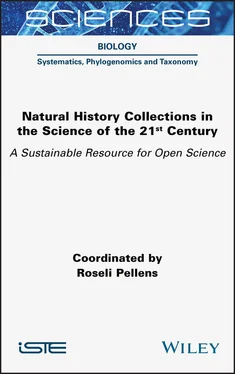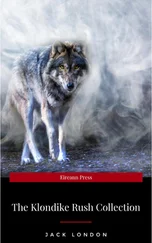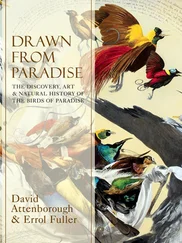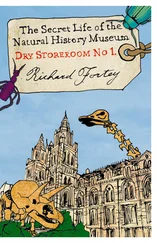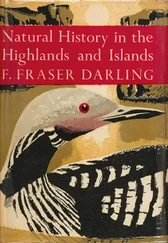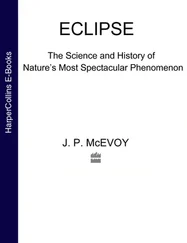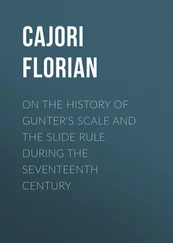1 Cover
2 Title Page SCIENCES Biology , Field Director – Marie-Christine Maurel Systematics, Phylogenomics and Taxonomy Subject Head – Philippe Grandcolas
3 Copyright First published 2021 in Great Britain and the United States by ISTE Ltd and John Wiley & Sons, Inc. Apart from any fair dealing for the purposes of research or private study, or criticism or review, as permitted under the Copyright, Designs and Patents Act 1988, this publication may only be reproduced, stored or transmitted, in any form or by any means, with the prior permission in writing of the publishers, or in the case of reprographic reproduction in accordance with the terms and licenses issued by the CLA. Enquiries concerning reproduction outside these terms should be sent to the publishers at the undermentioned address: ISTE Ltd 27-37 St George’s Road London SW19 4EU UK www.iste.co.uk John Wiley & Sons, Inc 111 River Street Hoboken, NJ 07030 USA www.wiley.com © ISTE Ltd 2021 The rights of Roseli Pellens to be identified as the author of this work have been asserted by her in accordance with the Copyright, Designs and Patents Act 1988. Library of Congress Control Number: 2021944047 British Library Cataloguing-in-Publication Data A CIP record for this book is available from the British Library ISBN 978-1-78945-049-1 ERC code: SH5 Cultures and Cultural Production SH5_7 Museums, exhibitions, conservation and restoration
4 Foreword
5 Acknowledgments
6 1 Natural History Collections: An Essential Resource for Science in the 21st Century
1.1. Collections in early 21st century science 1.1. Collections in early 21st century science Research on collections is gaining unprecedented scientific importance because of its potential to answer the major questions of our time. Collection specimens contain information that allows us to reconstruct the puzzle of the history of life, humankind and the universe, as well as provide clues for understanding environmental transformations. This broadens the scope of research on the collections. Collections remain indispensable for systematics. In turn, systematics contributes more than ever to the enrichment of collections because of the unprecedented development of identification methods and to phylogenetic and evolutionary inferences. The result is an increase in the number of identifications and the availability of new datasets that facilitate the study of living organisms as a whole. Systematics creates new forms of association between specimens and information that are increasingly numerous. Its role is essential and indispensable for any further use of the specimens. Collections are increasingly used in two new areas: the research of new information on specimens and global analyses on large datasets of specimens. The principle of open science, on which systematics was built and which has always been the basis of collection data exchange, is thus shaping new forms of data provision. A wide range of tools has been developed to access information residing in collections. For example, new techniques are available to identify parasites and commensals (viruses, bacteria, protozoa, etc.) or to measure the chemical content (carbon content, heavy metals, stable isotopes, etc.) of collection specimens. New computer approaches allow the availability of all collection data from single portals called “aggregators”.
1.2. New explorations because of the magnitude and diversity of the collections’ data 1.3. Research using and driving the constitution of natural history collections 1.4. References
7 2 Natural History Collections: An Ancient Concept in a Present and Future Perspective 2.1. Introduction 2.2. A tribute to curiosity and coupling with classifications 2.3. The structuring of our thoughts and actions by an ancient concept 2.4. Collections: more than species catalogues 2.5. Big Data collections in space and time 2.6. What future is there for the use of collections? 2.7. Conclusion 2.8. References
8 3 Louis XIV’s Blue Gems: Exceptional Rediscoveries at the French National Museum of Natural History 3.1. Introduction 3.2. A scientific investigation of color 3.3. The digital decoding of the creative genius of the royal gem cutter 3.4. Epilogue: toward a renaissance... 3.5. References
9 4 Rediscovering Human Mummies: Unpublished data on the Chachapoya Mummy Exhibited at the Musée de l’Homme 4.1. Introduction 4.2. Materials and methods 4.3. Results 4.4. Discussion 4.5. Conclusion 4.6. References
10 5 Reconstructing the History of Human Populations: A Challenge for Biological Anthropology 5.1. Introduction 5.2. Cranial morphology and settlement history 5.3. Cranial morphology and adaptation to the environment 5.4. The importance of cranial collection for the advancement of research in biological anthropology 5.5. References
11 6 The Discovery of New Metal-Hyperaccumulating Plant Species in Herbaria 6.1. Metal-hyperaccumulating plants 6.2. The screening of herbarium collections: from atomic absorption to X-ray fluorescence 6.3. The discovery of new metal-hyperaccumulating plants at the MNHN herbarium 6.4. Conclusion 6.5. Acknowledgments 6.6. References
12 7 Fossil Crustaceans in the Light of New Technologies 7.1. Introduction 7.2. Fossil crustaceans 7.3. The radiation of fossil crustaceans 7.4. Exceptional preservation of fossil crustaceans 7.5. Ostracods and paleogeography at the end of the Paleozoic 7.6. References
13 8 The “Cyanobacteria and Microalgae” Collection in the Time of “-omics” 8.1. Introduction 8.2. A living collection supported by research 8.3. New uses of the collection in basic research 8.4. Enhancing the value of biological resources through the search for innovative bioactive molecules 8.5. Expertise in environmental diagnosis 8.6. The living collection of cyanobacteria and microalgae of today and tomorrow 8.7. References
14 9 The Collection of Cryopreserved Cells and Tissues of Vertebrates: Methods and Application 9.1. Introduction 9.2. History of the collection 9.3. Can all living beings be cryopreserved? 9.4. Current applications 9.5. Current composition of the bank 9.6. Perspectives 9.7. References
15 10 Herbaria, the Last Resort for Extinct Plant Species 10.1. Context and objectives 10.2. Proposed approach and protocol 10.3. First results 10.4. Discussion and conclusion 10.5. Acknowledgments 10.6. References
16 11 Ocean Cores, Climate Archives 11.1. Introduction 11.2. The MNHN’s oceanic collection 11.3. Development of core drilling techniques 11.4. Ocean cores: archives of past climate variability 11.5. Climate proxies 11.6. Analytical techniques 11.7. Conclusion 11.8. References
17 12 Clarifying the Radiocarbon Calibration Curve for Ancient Egypt: The Wager of Herbaria 12.1. Introduction 12.2. Carbon-14 ( 14C) dating and Egyptian chronology 12.3. Specificities of the Egyptian landscape and the objective of the project 12.4. The flora of Egypt in the MNHN Herbarium 12.5. Analytical and statistical challenges 12.6. Conclusion 12.7. References
18 13 Herbaria, a Window into the Evolutionary History of Crop Pathogens 13.1. Epidemics, emergences and re-emergences 13.2. Development of agriculture, domestication of cultivated plants and their diseases 13.3. Molecular biology and genomics as a tool for studying phytopathogenic micro-organisms 13.4. Contributions of the herbarium samples 13.5. How to explore a herbarium 13.6. Characteristics of old nucleic acids and their treatment 13.7. Xanthomonas citri pv. citri and its emergence in the Indian Ocean 13.8. Emergence and evolutionary history of plant pathogenic viruses: the geminivirus model 13.9. Discussion 13.10. Acknowledgments and funding 13.11. References
19 14 The Yellow-Legged Asian Hornet: Prediction of the Risk of Invasion and the Study of its Color Variations 14.1. Introduction 14.2. Vespa velutina: some elements of taxonomy and biology 14.3. Sampling of specimens 14.4. The origin of invasive lineages of V. velutina in France and Korea 14.5. Expansion risks in Europe and worldwide 14.6. Origin of color and shape variations 14.7. Conclusion 14.8. References
Читать дальше
